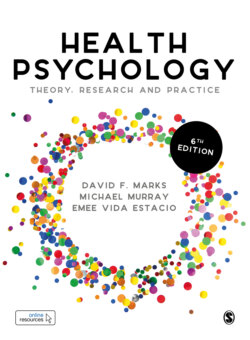Читать книгу Health Psychology - Michael Murray - Страница 76
Lives Worth Living versus the Right to die
ОглавлениеThe pervasive devaluation of people with disabilities, and the negative assumptions about their lower quality of life, are central to the current debates about the abortion of impaired foetuses and the legalization of assisted suicide/euthanasia or the right to die. Disablement rights organizations champion the argument that abortion decisions should not be made on the basis of foetal impairment indicators, whereas they challenge the ‘right-to-die’ rhetoric on the basis of disablement.
The disablement movement argues against abortion on the grounds of potential impairment due to the eugenic implications of such a practice (Sharpe and Earle, 2002). The reason for their concern is encapsulated in Singer’s quote: ‘the killing of a defective infant is not morally equivalent to the killing of a person; very often it is not morally wrong at all’ (Singer, 1993: 184). The new genetic testing and selection technologies allow the identification of suspected foetal impairment during pregnancy and subsequent foetal termination. Shakespeare (1998: 669) argues that such technologies operate as a weak form of eugenics ‘via non-coercive individual choices’ based on the assumed unacceptable quality of life of disabled people. The rationales for screening and termination include assumptions that people with disabilities are more costly to society, that the lives of children with disabilities are harmful to their families, and that some impairments involve a level of suffering and misery that makes life not worth living.
The way professionals describe test results and the influence of the advice they give is also a concern. There is substantial evidence that the advice given, while often subtle, most frequently encourages termination in response to potential impairment results, and most testing takes place within a plan-to-abort context. There is a tension between this argument and the feminist position that women have a categorical right to make decisions about their own bodies, including the decision to terminate an unwanted pregnancy. However, the disablement movement position is not against abortion itself; rather, it revolves around the basis upon which the decision is made. Aborting a specific foetus on the basis of a devalued attribute is different from aborting any foetus on the basis of not wanting to have a child at that time (Fine and Asch, 1982). It is unlikely that a woman would be encouraged to terminate a pregnancy because a test indicated the child is likely to have ginger hair; however, the same is not true when a test suggests a possibility of impairment. It is this difference that makes it an issue of discrimination. The disablement movement also asserts the rights of disabled women to have children. This fundamental human right is denied to many women, particularly those with cognitive and emotional impairments, as the additional support and resources that they need to allow them to raise a child are often not available. In some countries forced sterilization still occurs, including Australia, Spain and Japan.
The right-to-die debate revolves around the argument that people with severe or terminal illness and people with disabilities have the right to end their lives when they feel life has become unbearable, and that assisting them to do so should not be illegal. We discuss this issue in more detail in Chapter 24.
The argument against the right-to-die lobby, although implicitly anti-suicide, is not necessarily about whether suicide is right or wrong per se. It should be viewed as being about the differential treatment of the issue for people with disabilities and severe illnesses as opposed to ‘healthy’ people. Morally sanctioning assisting people with incurable terminal or non-terminal conditions to end their lives or withholding life-sustaining treatment/support, while morally opposing the right of suicidal ‘healthy’ individuals to end their lives (and offering them suicide prevention interventions), equates to a severe form of discrimination based on the stigmatization of these individuals.
